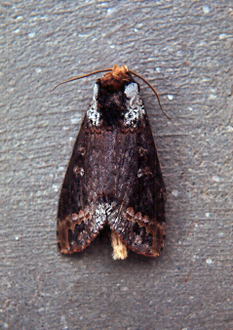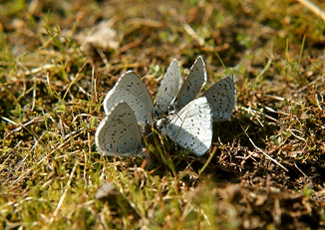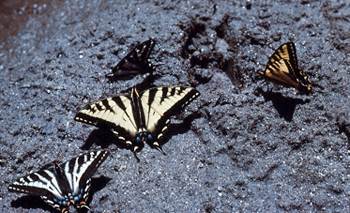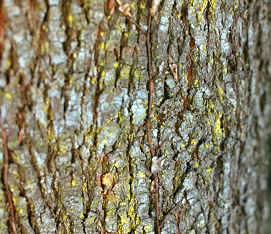The Miracle of Insects
This is not the age of man, however great his superiority ... it is the age of insects — W.C. Allen
I once heard it said that God was inordinately fond of beetles. I'd say God was inordinately fond of insects in general, as judged by their astonishing array of sizes, colors, shapes, habitats, abilities, and behaviors.
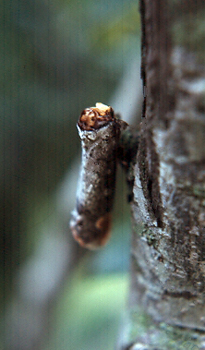
A Nepalese "twig moth"
Although I marveled at the few insects I was aware of along the ditch I played in as a child, I had no inkling of the magnitude of the insects' world. I knew about the water skippers in the ditch, for example, but had no idea that a water skipper also lives on the open seas. I knew about grasshoppers because I used them as bait to catch fish, but had no concept of their incredible variety, as I have since discovered in Egypt, Nepal, Japan, Malaysia, and throughout much of Europe, the United States, and Canada.
A dragonfly is impaled on a barbed-wire fence by a shrike to save it for a later meal.
Insects, even here in and around the pond of my garden, range in size from the minute aphid to the dragonfly that is several inches long. They also range from a dull white (a termite), to the brilliant hues of the rainbow (a tiger beetle), to glorious primary colors and all combinations thereof (butterflies). Some insects are blind (various termites), whereas others have five eyes (bees), three, small, simple eyes set in a triangle between two, large compound eyes.
Insects also come in every conceivable shape, including round (ladybug), oblong (click beetle), vertically flat (flea) horizontally flat (flat, bark beetle), skinny (walking stick), fat (scarab), smooth (leaf beetle), long-snouted (weevils), frilly (tropical praying mantis), plainly visible (yellow jacket), well camouflaged (Saharan pebble beetle), and so on. They live in my garden below ground, inside leaves, in bushes and trees, inside dead wood, and in the water of my pond. Beyond my garden, insects occur from the Arctic to the tropics, from the jungle to the desert, from the ocean shore to above timberline in the Himalayas, in every kind of water and in every kind of soil.
The insects in my garden fly, hop, crawl, climb, swim, walk on water, and burrow. The dragonfly, for instance, can hover, fly forward and backward, up and down, to this side and that. The flea, flea beetle, and grasshopper, can hop. In fact, if I could jump proportionately as high as a flea, I could leap over a very tall building. Then again, if I could pick up and carry a load proportional to that of an ant, I'd be the strongest person in the world. If I could dig with a speed proportional to the ground cricket of southern Nepal, I could, with my bare hands, out-dig anyone with a shovel.
Beauty of "flutterbys"
Although people think of most insects as crawling, if I could cover the terrain with the speed and endurance of an ant, I would easily walk fifty miles in an eight-hour day without tiring. If I could leap a distance proportional to that of a grasshopper, I'd forever be the world's broad-jumping champion by a very wide margin. If I could climb up a vertical surface like a housefly, I could safely walk up the side of a twenty-story building. If I could emulate a water skipper, I could literally "walk on water." If I could swim with the speed of a water boatman, I'd be the fastest human swimmer on Earth. If I could maneuver in the water like a whirligig beetle, I'd be little more than a blur of motion. If I was as light and well engineered as an ant, I could fall from a ten-story building and sustain not a single injury.
Insects pollinate flowers, cut leaves, produce honey, produce acid, eat wood, eat every conceivable kind of plant and all of their parts, cultivate fungi, make silk, make wax, metamorphose, carry a cold light in their bodies that is blinked for communication at night, "herd" and "milk" other insects as though they were cows, recycle decomposing vegetation and flesh, chew up wood and spit out paper, sting, bite, suck, spit, keep blood from clotting, live totally under water at one stage of their lives and on land in another, and make music.
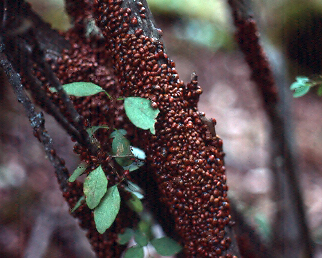
Winter gathering of "ladybugs," which are really beetles
Some insects are social and construct elaborate homes in the ground; in wood; and even build huge, vertical, colonial homes of soil. Others make more modest homes of mud with arched entryways. Although many insects are single in lifestyle, there is a scarab that lives as a guest in ant colonies.
Insects are predaceous, vegetarian, fungivorous, frugivorous, parasitic, mutualistic, and cannibalistic. There are as well adult insects, such as Mayflies, that do not eat at all; in fact, some even lack mouth parts. In addition, insects transmit diseases among themselves, other animals, plants, and humans. Some wasps even make paper and have done so long before humans learned how. If all of the truly miraculous aspects of the world's insects were incorporated into me as a single person, I would be the most amazing and adaptable creature on Earth, although not always socially acceptable.
That insects have so many abilities that we humans lack and could never emulate, and so are naturally superior to us in some ways, should give us pause to contemplate our place in the scheme of things and gain a little humility. Then, perhaps, we would treat our home planet with more respect.
"Simple-minded" as insects may be by our reckoning, at the rate we are destroying our global environment, they will likely be around well after we humans have made planet Earth uninhabitable to ourselves.
However simple we may think insects to be, Ralph Waldo Emerson pointed out that, "The invariable mark of wisdom is to see the miraculous in the common." Perhaps we need to look more closely.
Can you find the Nepalese stinkbug?
© chris maser 2004. All rights reserved.
